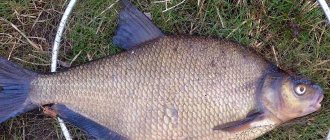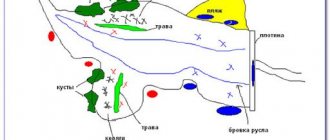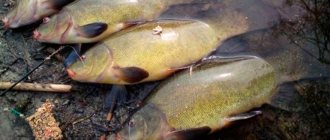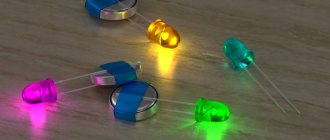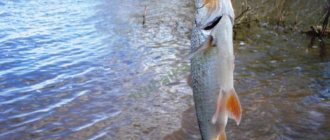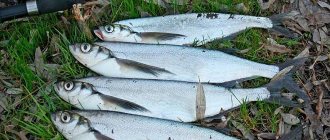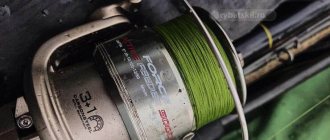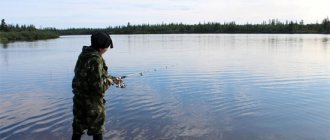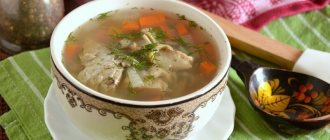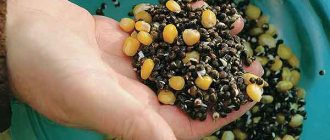Feeder rod for carp
The basis for collecting equipment is the choice of a feeder rod. Since you will have to fish long distances on currents with a decent amount of complementary food supplied in feeders, the length of the rod is selected within 3.5-4.2 meters. Test blank values are optimal in the range of 100–150 grams. For high-quality sharp hooks of a pecked trophy, choose fishing rods with a semi-fast or fast action. The presented description clearly falls under the classification of heavy or, in the fishing feeder subculture, heavy feeder.
The carbon fiber material of the blank is considered optimal for carp fishing. Such fishing rods are not heavy, but at the same time flexible and flexible, capable of withstanding repeated overloads that occur when fishing for large fish. Winding rings in heavy feeders are attached to the blank on reinforced support legs and are equipped with ceramic liners that can withstand friction from the loads of braided cords. A three-piece plug fishing rod with the ability to change the quivertype to a different type of action, three of which are sold in the tackle set, will be an ideal option that can cover all the conditions for carp feeder hunting.
Bait for catching carp on a feeder
Since carp are attracted to any food, any types of bait mixtures are suitable.
There is only one feature to consider. The bait should contain a lot of coarse ingredients. The consistency of the finished mixture is determined directly while fishing. If the bait ball disintegrates upon contact with water, then such food will instantly be washed out of the feeder. You need to add a binding component or compact the bait in the feeder with your fingers.
The time it takes to wash out the bait on the bottom should be approximately 5 minutes.
Use store-bought Sensas and Trapper mixtures. They are more expensive than others, but much more effective. Package price from 200 rubles.
Coil
The selected form is equipped with an inertia-free reel, which has a high traction force, about 5 units, and numbering along the spool in values of 4500–5000. The optimal number of bearings to ensure harmonious and smooth operation of the mechanism is 5–7 pieces. The capacity of the spool is due to the use of relatively thick main cords in long sections, at least 100 meters. The feeder tackle must, with its clamping element, press the fastening leg of the reel to the butt handle without play, while at the same time eliminating excessive tension.
Important! As in carp fishing, the functionality of a carp spinning reel requires a finely adjustable friction brake, which is practical for fishing due to its location in the rear part of the mechanism body.
The presence of a bayrunner function is also required. The baitrunner will protect the gear from being pulled into the water and will allow the angler to comfortably conduct feeder hunting in parallel with several rods.
Line or cord
Feeder gear in carp fishing works over long distances and in practice, the use of braided cords is much more effective than nylon lines. The bites of even this powerful fish are not always distinguished by distinct blows and locomotive pulls, which is more typical of carp. Carp during periods of low activity can take a long time to try the bait. The signal from these actions with a long length of nylon stretch cord will not be transmitted to the quivertip of the rod.
Important! Rigid braided lines clearly convey even small fish pokes, which can be used to guide you at the time of hooking even with a sluggish bite.
Braids are used in diameters starting from 0.2 mm, without particularly paying attention to color, because thinner equipment will be used to complete the installation. Equipping a feeder with a monofilament line is justified only at fishing distances of 20–25 meters, as well as in combination with braided fishing using a shock leader fishing method. Shock leaders are necessary when fishing on shell rocks, as monofilament is more resistant to abrasion than braided line. Monofilament transparent fishing lines are selected in diameters starting from 0.3 mm, with low memory and the ability of the thread to be arbitrarily immersed in water.
Read in more detail what is better to put braid or fishing line on the feeder and what this choice depends on.
Choosing a feeder for catching carp on a feeder
When fishing for carp on a feeder, the type of equipment does not matter much.
A loop system, a paternoster, and an anti-twist tube are also suitable. But you have to think about choosing a feeder.
- For standing water and rivers with weak currents, cylindrical plastic feeders are suitable.
- For medium-flow rivers, a lead feeder is suitable, and for strong-flow rivers, a steel cage feeder is suitable. When using maggots for feeding, a special container is required.
Feeder tackle for carp
Carp live in rivers with moderate currents, the strength of which has a significant impact on the rigs installed for fishing, and they, in turn, require structures that, in addition to transmitting a distinct bite signal, can stably hold the fishing point without moving from the fed areas.
Inline equipment
For currents, gear is supplemented with inline-type installations using method and spring feeders. An asymmetrical loop is practical to knit; in this case, a cage feeder is used. The techniques presented above make the equipment more sensitive, but at the same time capable of using heavy feeders that hold well on the bottom in moderate currents. It is recommended to attach the mounting used to the main cord through a tandem carabiner with a swivel. In places where feeders may come into contact with knots, damper beads must be used to protect the strings from impacts during casting. The tied equipment is made from thinner braided cords than the main one or from monofilament.
Mesh feeders are more practical in the shape of a parallelepiped. When mating inline, springs that are weighted by loading the feeder or purely method versions of the accessory with ribs for attaching the feeding mixture are used. Leashes are made of fluorocarbon or nylon. This material is less noticeable to fish and does not cause unnecessary suspicion when eating bait.
Important! Fishing practice shows that it is more effective to catch carp on short leashes not exceeding 20 cm in length.
Hooks are selected based on the bait used. Animal baits are placed on hooks with an extended shank. Plant baits are mounted on short hooks. It is advisable to use dark colored hooks, black, blue or brown. The flash of silver or golden hooks scares away the fish.
Spring fishing for carp on a feeder
Fishing for carp begins at the end of April.
The fish bite gradually intensifies towards the time of spawning. You should look for carp:
- under steep banks on clayey edges;
- in pits with snags;
- in deep pools;
The ideal casting option is under the edge. The hook is baited with:
- bunch of worms;
- crawls;
- pearl barley shells;
- cancerous necks;
- In the spring, fish-flavored boilies have proven themselves well.
The animal components that are used for bait are added to the bait. Typically, spring fishing on rivers is limited by high water.
Lure
Without effective attachment with feeding compounds, catching carp becomes quite difficult and, in most cases, futile. Despite its natural gluttony, the fish is selective in its taste preferences, which vary from body of water to body of water with their own nuances.
Throughout the established practice of feeder hunting for this subspecies of carp, fishermen have selected universal bases of feeding mixtures, the addition of a certain type of attractant to which contributes to the success of fishing. The basis of feeding is made from a brew of millet or barley porridge, adding fish feed and sweet breadcrumbs to the mixture. The prepared porridge is not decanted, leaving the broth as an element that glues the components together.
The balls supplied to the fishing zone must quickly reach the bottom and remain in a dense state for some time, only creating a trail of turbidity. The turbidity plume is provided by adding powdered milk or raw semolina to mixed mixtures. Soils containing clay serve as weighting agents and thinners. Vegetable ingredients in the form of sweet canned corn, crushed boiled potatoes and peas are combined with an animal base, mixing chopped worms, crushed bloodworms and canned maggots in mixed mixtures.
Important! The pulp of crushed shells living in the fishing zone contributes to the rapid approach of fish to the feeding point.
Attractants for tackle charged with the bait described above can be vanilla, cinnamon, honey and strawberry essence. Carp are responsive to sweet tastes, and in some reservoirs the smells of banana, chicory and the mixed attractant tutti-frutti can become fishing hits.
Makushatnik
Makushatnik - a cube of makushka or cake. There are several types of cake on sale with the addition of vanilla, honey, peas and many other flavorings.
The following equipment is used for catching carp:
- A triangular or dovetail sinker weighing up to 80 g in weak currents and more than 100 g in strong currents;
- A cube of top with recesses for hooks and a hole in the middle, pressed tightly against the sinker during casting;
- Bead for stopper and latch-clip. To make it, you need to take a loop from the fishing line, tie a couple of hooks to it, then tighten it around the bait cube;
- Fishing line up to 0.5 mm thick, up to half a meter long with hooks made of high-quality steel No. 2-4;
- The leashes are 5-7 cm long; if they are longer, the tackle can get tangled and prevent the fish from trying the bait, and there is a greater chance of the hook falling out of the top;
To protect your fingers from cuts on the fishing line when retrieving and pulling out prey, it is better to use special carp finger guards.
The equipment installation is as follows:
- About half a meter of fishing line is threaded through the hole in the weight.
- A loop is made at one end to secure the cambric.
- A stop bead is located 10 cm from the other end as a limiter for the bait when biting.
- Hooks are attached to the clasp.
- A knot is passed through the fastener to tighten the fishing line.
- The clasp is hidden in the crown.
The fishing technique is very simple:
Throwing tackle from a boat. The top gradually opens, particles come off from it, attracting fish. The fish finds the tackle, tries it, plays with it, sucking in and spitting out pieces. After sucking in the hook and getting hooked on it, the carp makes a jerk, trying to free itself, then it’s time to hook it and pull it out. A special landing net, which is placed under the fish, helps with this. You can't do this alone, you need help.
For ease of fishing, you need to have several sets of hooks on hand to attach the rig to the rod while the catch is being removed from the hook. To replace the abandoned one, a new cube is placed on the leash freed from fish.
Read Self-hooking winter fishing rod
Lures
Carp are omnivores and, if available, can feed on plant and animal foods. It is worth noting that carp fishing in autumn and early spring is carried out using baits of animal origin. In the summer season, fish prefer bait of plant origin. The animal bait in the classic is a bunch of dung worm. Bloodworms and maggots will always be preferable when fishing for carp in a place unfamiliar to the angler. It is worth trying to fish for the meat of shells that live in fishing reservoirs. Carp love to feast on the meat of molting crayfish, and during the insect season, carrion, collecting drowning grasshoppers and chafers.
The diet of plant foods includes grains of all cereals, which are boiled or steamed until soft before serving to fish. Canned sweet corn and green pot kernels are ideal for catching ravenous eaters in warm waters. Young potatoes, boiled with small tubers to a state that does not allow the vegetable to crumble, are considered a promising bait for July. From carp fishing to carp feeder fishing, the technique of fishing with boilies has successfully migrated. To catch carp, large balls with a diameter of 3 cm are used, choosing fruit flavors.
Bait for carp
You can buy ready-made bait in the store. We recommend the following brands: Sensas, Trapper, Dunaev with fruit ingredients, for carp fishing in the current.
And now we will describe to you one of the recipes for bait mixture at home. We will need:
Bait recipe
Bring the water to a boil and, stirring, pour into it in proportions of 1 to 1: millet grits, corn grits, pearl barley and peas. Cook the porridge until done. Just before the end of cooking, add semolina and oatmeal
We watch carefully so that it does not burn - this is very important. Add a little salt and season with unrefined sunflower oil. Cover with a lid and set to cool until our mixture is ready. Now we need blue clay. For what? And so that when we throw the bait along the train, we can see where the current carries it and more accurately feed the place
You need to mix the mixture in a ratio of 2 to 1. That is, for one part of clay you need two parts of the bait mixture. Mix everything thoroughly, add dry cereals from the mixture for viscosity. You can add a little more unrefined sunflower or hemp oil.
The feeding technique itself is that, unlike in stagnant water, where it is advisable to carry out complementary feeding the day before the start of fishing, complementary feeding on the current will have to be done at the time of fishing itself
It is important to precisely cast the bait mixture into the same place; how to do this is described in the basic guide to feeder fishing for beginners
However, do not neglect store-bought mixtures. Sometimes dry bait from Sensas works wonders. You can buy a package of bait online or in specialized stores for carp fishermen.
Choosing a location and fishing technique
A carp feeder is considered the most promising tackle for catching this wary fish. The possibility of fishing at long distances and at various depth levels allows you to get a trophy from permanent places where fish stay and feed. Flocks of carp inhabit the deep-water backwaters of large rivers at the junctions with currents, choosing hard sandy or clayey soils for parking, going to nearby thickets of underwater vegetation with the presence of silt deposits or shell rock to feed. Knowing the trajectory of the school’s movement to the feeding points, it is on these routes that feeder fishing is carried out, feeding a small area and collecting fish for a tasty meal.
Important! When planning a multi-day fishing session, it is effective to install bait, dusting from a mesh bag at the point where the tackle is installed. During short-term fishing, an initial, plentiful feeding is carried out, then, when the intensity of the bite decreases, small portions of the nutrient mixture are added to the fishing area.
Re-casts are done every 15 minutes. As a rule, at the beginning of fishing, small things collect on the feeding table and you should not associate a couple of hours of fishing for roach or silver bream with an unsuccessful choice of place. Carp will be one of the last to be suitable for bait, which can be felt by a decrease in the intensity of the bite of small fish and a pause, which will end with bites of real trophy fish.
An active fish bites on the move, knocking the rod off the stand. The angler's reaction should be a sharp hook and subsequent control of the tension of the cord, which does not allow the powerful opponent to make turns, which threatens to cut the line by cutting the front ray of the fish's dorsal fin. When fishing, the trophy is tired, constantly preventing its freedom of movement, which is done by unwinding the cord with synchronized pulling of the rod. Overloads should be compensated by a properly configured friction brake coil. The carp pulled to the shore is taken into the landing net.
